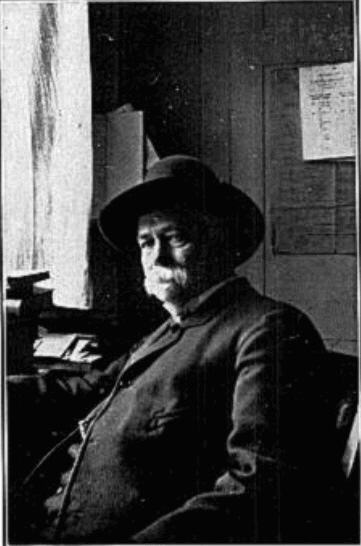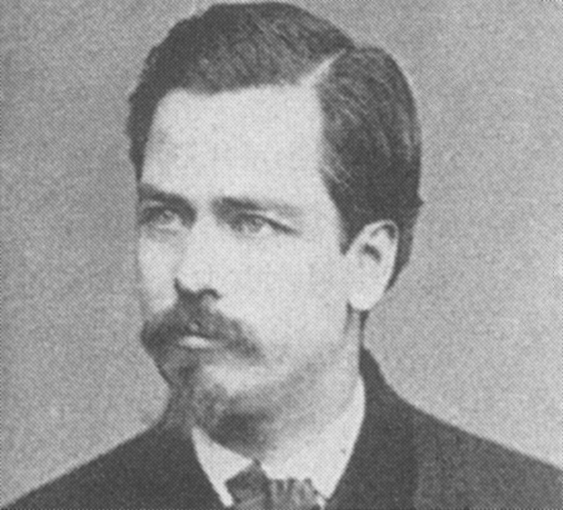1. Biography
Tommaso Salvadori's life was marked by a commitment to both scientific pursuit and national service, beginning with his early education and culminating in a distinguished career in natural history.
1.1. Early Life and Family
Born in Porto San Giorgio, Fermo Province, in the Marche region of Italy, Tommaso Salvadori was the son of Count Luigi Salvadori and Ethelyn Welby, who was English. His family lineage included notable connections; his brother Giorgio married their cousin Adele Emiliani, and their nephew Guglielmo Salvadori Paleotti later married Giacinta Galletti de Cadilhac. This extended family included prominent figures such as Massimo Salvadori and Joyce Lussu.
1.2. Education
Salvadori pursued his academic interests in medicine, studying at universities in both Pisa and Rome. He ultimately graduated with a medical degree from the University of Pisa.
1.3. Military Activities
Despite his medical background, Salvadori also played a role in the political landscape of his time. He participated as a medical officer in Giuseppe Garibaldi's historic Expedition of the Thousand in Sicily in 1860, which was a pivotal event in the Italian unification. The Japanese source specifically notes this as Garibaldi's "second Sicilian invasion."
2. Major Achievements and Activities
Tommaso Salvadori's professional life was dedicated to the advancement of natural history, particularly in the field of ornithology, where he made substantial contributions through his museum work and extensive research.
2.1. Career as a Naturalist
Salvadori developed an early and profound interest in birds. His professional career began in 1863 when he became an assistant at the Turin University's Museum of Zoology. He worked under Filippo de Filippi during this period. In 1879, his expertise was recognized with his appointment as Vice-Director of the Royal Museum of Natural History in Turin, a position he held until his death. During his tenure, he was instrumental in developing the museum's bird collection, transforming it into the most important ornithological collection in Italy.
2.2. Research Fields and Writings
Salvadori specialized in the birds of Asia, conducting extensive studies on large collections from these regions. He examined specimens held at the Museo Civico di Storia Naturale di Genova and also studied East Indian bird collections in major European cities such as Paris, London, Berlin, and Leiden. His research included specimens gathered by Italian explorers like Luigi Maria d'Albertis.
In 1880, he took a leave of absence to work at the British Museum of Natural History in London, where he contributed to three volumes of their comprehensive Catalogue of the Birds. This work further solidified his international reputation, leading to his election as a foreign member of the Zoological Society of London. Throughout his career, Salvadori was a remarkably prolific author, publishing over 300 papers in ornithology. Notable works include his 1862 catalogue of the birds of Sardinia, Catalogo Sistimatica Degli Uccelli di Borneo (1874), and Ornitologia della Papuasia e delle Molucche (1880).

3. Works
Tommaso Salvadori authored or co-authored numerous significant publications throughout his career, contributing extensively to ornithological literature. A partial list of his works includes:
- Monografia del Gener Ceyx Lacépède. Torino (1869) (Atti della Accademia delle Scienze di Torino)
- Nuove specie di uccelli dei generi Criniger, Picus ed Homoptila Nov. Gen.. Torino (1871) (Atti della R. Accademia delle Scienze)
- Intorno al Cypselus horus. Torino (1872) (Atti della R. Accademia delle Scienze), co-authored with O. Antinori
- Intorno ad un nuovo genere di Saxicola. Torino (1872) (Atti della R. Accademia delle Scienze), co-authored with O. Antinori
- Nuova specie del Genere Hyphantornis. Torino (1873) (Atti della R. Accademia delle Scienze)
- Catalogo Sistimatica Degli Uccelli di Borneo (1874)
- Di alcune specie del Genere Porphyrio Briss.. Torino (1879) (Atti della R. Accademia delle Scienze)
- Ornitologia della Papuasia e delle Molucche. Torino (1879) (Atti della R. Accademia delle Scienze)
- Osservazioni intorno ad alcune specie del Genere Collocalia G.R. Gr.. Torino (1880) (Atti della R. Accademia delle Scienze)
- Collezioni ornitologiche fatte nelle isole del Capo Verde da Leonardo Fea. Annali Museo Civico di Storia Naturale di Genova (2) 20: 1-32. (1889)
- Catalogue of the Psittaci, or parrots, in the collection of the British museum. London (1891)
- Catalogue of the Columabe, or pigeons, in the collection of the British museum. London (1893)
- Catalogue of the Chenomorphae (Palamedeae, Phoenicopteri, Anseres) Crypturi and Ratitae in the collection of the British Museum. London (1895)
- Due nuove specie di Uccelli dell'Isola di S. Thomé e dell'Isola del Principe raccolte dal sig. Leonardo Fea. Bollettino della Società dei Musei di Zoologia ed Anatomia comparata della R. Università di Torino (1901)
- Uccelli della Guinea Portoghese raccolti da Leonardo Fea. Annali del Museo Civico di Storia Naturale di Genova (1901)
- Caratteri di due nuove specie di Uccelli di Fernando Po. Bollettino della Società dei Musei di Zoologia ed Anatomia comparata della R. Università di Torino (1903)
- Contribuzioni alla ornitologia delle Isole del Golfo di Guinea. Memorie della Reale Academia delle Scienze di Torino, serie II, tomo LIII (1903)
- I - Uccelli dell'Isola del Principe
- II - Uccelli dell'Isola di San Thomé
- III - Uccelli di Anno-Bom e di Fernando Po
4. Evaluation and Impact
Tommaso Salvadori's extensive work in ornithology and his dedication to natural history museums have garnered significant recognition, leaving a lasting legacy in the scientific community.
4.1. Positive Evaluation
Salvadori is widely regarded as one of Italy's most important ornithologists. His prolific output of over 300 scientific papers, coupled with his instrumental role in expanding and organizing the bird collections at the Turin Museum of Natural History, highlights his profound impact on the field. His contributions were crucial in advancing the understanding and documentation of bird species, particularly those from the Asian region, thereby enriching the global natural heritage.

4.2. Eponyms and Commemorations
In recognition of his significant scientific contributions, numerous species of animals, especially birds and reptiles, have been named in honor of Tommaso Salvadori. These eponyms serve as a lasting testament to his legacy:
- The pheasant species Lophura inornata, commonly known as Salvadori's pheasant, is named after him.
- The crocodile monitor (Varanus salvadorii), a large lizard, is also named in his honor. It is also known by other common names such as Salvadori's monitor, the Papua monitor, or the artelia.
- The duck genus Salvadorina, which includes the Salvadori's teal (Salvadorina waigiuensis), bears his name.
- Other bird species named after him include:
- Salvadori's fig parrot (Psittaculirostris salvadorii)
- Yellow-capped pygmy parrot (Micropsitta keiensis)
- Salvadori nightjar (Caprimulgus pulchellus)
- Salvadori's antwren (Myrmotherula minor)
- Salvadori's eremomela (Eremomela salvadorii)
- Salvadori's seedeater (Serinus xantholaemus)